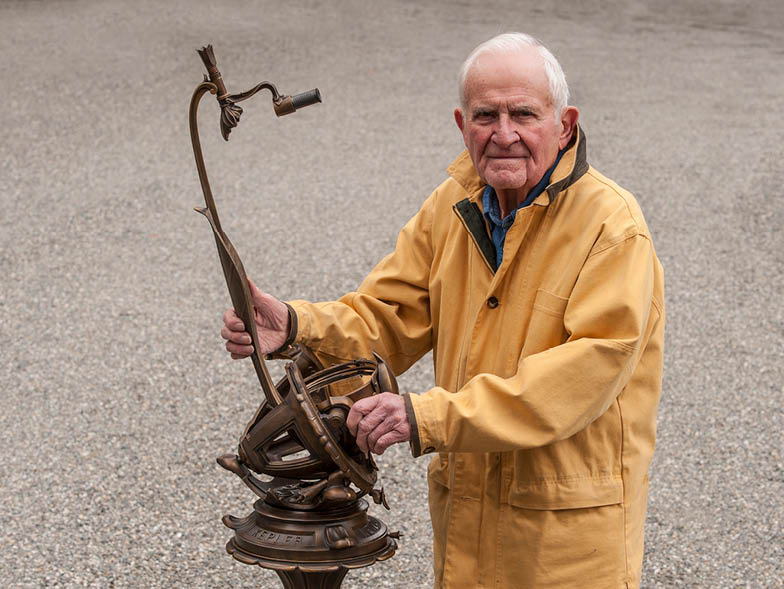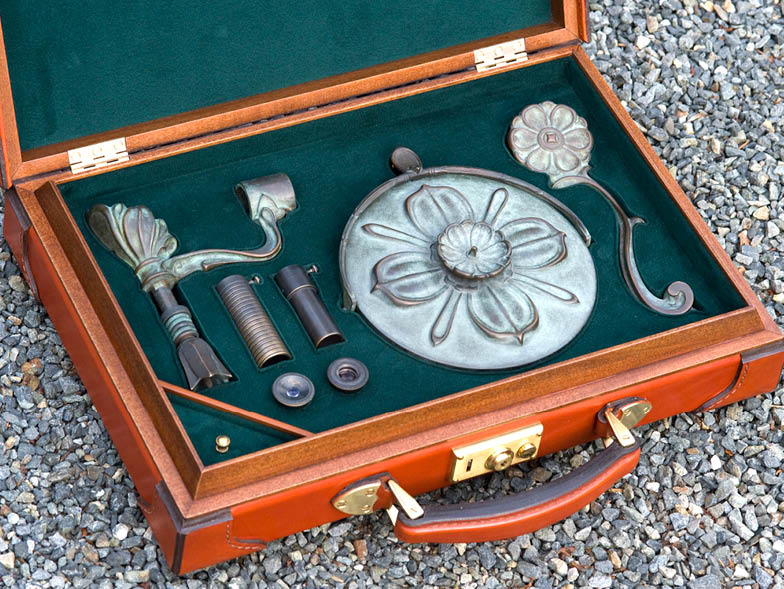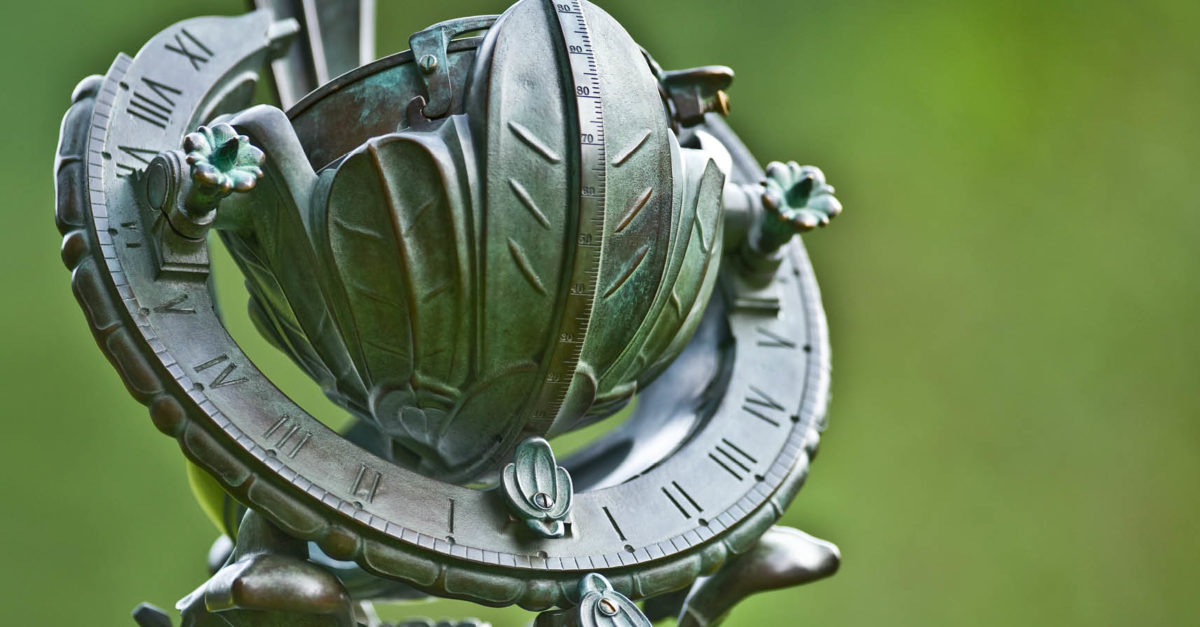The Art and Science of Stargazing
1972 was a notable year for US space exploration. The space shuttle program was created, and other astronomical accomplishments included Pioneer 10 entering the asteroid belt, Mariner 9 sending images of Mars, and Apollo 16 and Apollo 17 being launched—with the latter taking the iconic “blue marble” photo of our planet.
Down here on Earth, another journey began, one that would lead to seeing space in an entirely different way in the twenty-first century—through a piece of art.
It all started in West Africa. Fred Schleipman, a machinist, designer, and inventor, was part of a twelve-person expedition that also included Bert Willard, who was the curator of the Springfield Telescope Makers’ museum that famed telescope inventor Russell W. Porter started back in the 1920s. They quickly became good friends, and, since they both lived in Vermont, Bert invited Fred to visit the club after they got back home.
While there, Fred saw the Porter Garden Telescope for the first time. He thought it was beautiful, and he also had ideas for improving on its science. “The optics weren’t quite what they should be, and the facilities to adjust them didn’t exist at the time,” says Russ Schleipman, Fred’s son and business partner, who is also a professional photographer. “My dad figured that, if he were going to have one of these, he’d have to build it himself. He is a machinist and builds things like tiny turbines that spin at one million RPM—that’s 60,000 revs a second. Precision is important to him; perfection is his thing. So the challenge of making the Porter telescope was a big hurdle of interest for him. However, we realized that, if we were able to build one, we could make them commercially in multiples and start a small business.”

So Fred proposed his idea to the Springfield Telescope Makers. It took a few decades, but the club finally agreed—and a fatherson adventure began, named Telescopes of Vermont.
The club loaned them a Porter telescope for only three weeks, so the work would need to be a well-coordinated team effort. “My dad pulled together a team of really talented people,” Russ says. “His apprentice from years ago, Norm Williams, did the machining; it was worth sending the casting to Montana because he’s so darn good. Bert Willard and James Daley, who work on military satellite optics outside of Boston, specified the optics for us. Our pattern maker, Dave Nugent, is phenomenally talented. It was basically a dream team of foundry, machinery, and optics.”
Nugent, a resident of New Hampshire, “put his nose to the grindstone,” Russ recalls. “The original thirty-plus patterns were lost, and the shrinkage inherent in the casting of bronze demanded that we make new ones that would yield castings exactly the same size as the original garden telescope components. That was tricky engineering, involving a lot of computer time.
“In addition, the machining of the castings is the most demanding part of the manufacturing process because dimensions on bearing surfaces are critical, measured to tenths of thousandths of an inch,” he adds. “Because of this, the machining was, and continues to be, very critical to our process.”

The process itself is complicated because the workflow requires shipping items back and forth all around the country as the telescopes are being made; however, Russ stresses that “it’s worth it to have the best work done right by the right people. That’s all that matters, ultimately.” He says that there are about three hundred hours lavished on each telescope they make.
Optics and adjustability play an important role for their telescopes as well. The ability to adjust both the primary and secondary mirrors with set screws behind them and to have lasers line up the mirrors exactly is critical, according to Russ: “When you can fine-tune the optics, you get that pleasing sharpness of the dollar bill a hundred feet away where you can see serial numbers and engravings razor sharp. This was a big advancement from the original.
“We’ve made some other improvements that are not as obvious,” he continues. “There’s a thumb drive mechanism that allows you to turn a knob and the telescope will track moving objects such as a heavenly body without slipping. We’ve added a finder, too, that clips onto the telescope, so when you’re using it at night, you can aim it really well at a speck in the sky in your field of view, which is hard to do at 75 power without a good finding mechanism. Otherwise, it’s like trying to find an ant on the ground with a microscope.”
The end result: a unique piece of functional art that lets people explore the night sky.“It’s a true instrument instead of just a sculpture,” explains Russ. “The art seduces people over and over again. Guests will gather in a garden, see a sculpture with a long, floral neck, and will ask what it is. It really becomes theater for the person who wants a gadget that nobody else has.” Only thirty-eight have been produced so far, and the edition is limited to two hundred, so there’s also a “cachet of rarity along with the delight of surprising guests,” says Russ.
As a result, the wonder of the telescope elicits the same reaction wherever Russ goes. “Recently, I was showing the telescope at a private event in New Jersey,” he remembers. “I set it up, and people lined up to stare at the eyepiece for a few seconds. There’d be silence each time. Almost every single person whispered the same three words: ‘Oh my God.’ We’re bringing an experience to people that elicits a childlike fascination and excitement, which is really fun to witness.”

Even the Queen of England is a fan. “I had a booth at the Chelsea Flower Show in London a few years back,” Russ recalls. “I figured, ‘Why not invite the Queen?’ so I sent our materials over, and I got a phone call a couple of weeks later saying that Her Majesty requested to visit our booth. I had ten minutes alone with her, and I showed the telescope to her. She was engaged and interested, and she really talked to me and asked pertinent questions. She didn’t buy one, but the picture of her on our website was all worth it. It was a wonderful moment and an honor.”
A common denominator with every purchase of a garden telescope is a visit from Russ. He flies in, gives a tutorial, and stays until the customer is comfortable with it. “I typically meet some interesting people and get to step inside their lives a bit. That’s always a nice facet of the business,” he remarks. It’s also a business, he notes, that was founded on Vermont ideals. “Russell Porter was from Vermont, and so is my dad. So it was made and reiterated by two renaissance men from Vermont, about ninety years apart,” explains Russ. “Made in Vermont is also all about honesty, craftsmanship, quality, and straightforwardness. This is most definitely a Vermont story.”
The decade-long journey of making this instrument with his father and his team “is really satisfying,” according to Russ. “When you put a Porter Garden Telescope together after it comes back from the last foundry with the patina on it, it’s just breathtaking,” he adds. “This is a beautiful, bronze, art nouveau sculpture, but it’s also a well engineered instrument brought to life by an extremely talented team.”
“That’s the human side of this endeavor, and it’s what really matters the most,” he emphasizes. “Seeing the work put into the telescope and then witnessing the wonder and awe it brings to people is the most enjoyable aspect of resurrecting the garden telescope.”
For more info, visit gardentelescopes.com






















